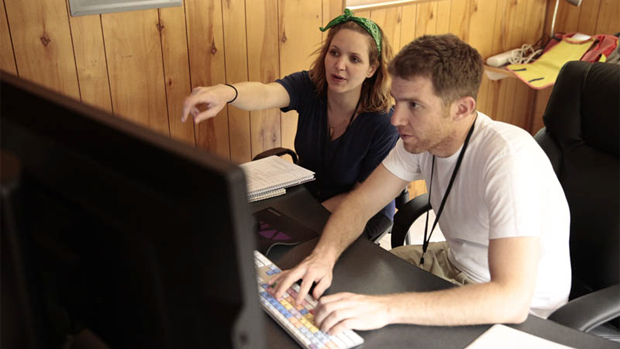 Back to selection
Back to selection
Jordana Spiro at the Sundance Directors Lab
 Jordana Spiro with actress Samira Wiley (Photo by Ryan Johnson)
Jordana Spiro with actress Samira Wiley (Photo by Ryan Johnson) A little while ago I was sent an email asking me to write this blog sharing my experience at the Sundance Directors Lab. I pretended I didn’t receive it. Communicating in first person without a script is not fun for me. As an actress, I am comfortable doing things in front of a crowd, and I ventured into writing/directing because my longing to express myself is strong. However, to do so without it being through something like the mechanism of film can turn me into a jumble of over-thinking nerves and desire to be liked. Fearlessness is a sexy, powerful quality that I do not possess. Yet the very spirit of the lab is to do the things that are difficult. And so here I am…
I wondered what would be interesting to know if I were to read about the lab from the outside. I had applied previously and didn’t get in, so I was very curious about what actually went on during this month-long workshop. Well, I can give you the gist of it. Prior to arrival, I had to prep five scenes from my screenplay that challenged me the most. Upon arrival on the gorgeous mountain we had a few days of directing/editing/writing workshops to warm up for the marathon to come. And then what begins is an intense few weeks of three day cycles: one day rehearsal – one day shoot – one day edit – rinse and repeat five times. At every stage the advisors visit your set to watch and question your approach. After each scene I sit in front of the group of advisors as they watch the edited scene and provide advice, criticism, reactions, etc. Then every Sunday evening, we screen the week’s work in front of our crew, actors, and Lab staff.

Last Sunday was my hardest day. My scene was torn apart in the advisor meeting, so screening it in front of a movie theater full of people was about as enjoyable as paper-cutting my eyeballs. I felt untalented and silly and I didn’t want to show that side of myself. Then I asked Michelle Satter (Director of the Feature Film Program) why we’re asked to screen work that we feel we struggled with AND already learned from. She said that if we don’t show the work, even if we feel we failed, then it becomes too precious.
That, in a nutshell, is what makes this experience so challenging and so necessary for me. Exploring, fumbling, failing, and brushing yourself off is the heartbeat of this lab. Here you have nothing to hide behind. You can’t hide behind intellectualizing your script or your shooting plan to anyone. Years can go by where I can cling onto an idea and the longer I cling the more I need it to be true. The lab says, forget all that, get it on its feet, let it stumble, let it be something you didn’t think it was. Bookstores are filled with self-help sections devoted to telling me not to fear failing. But here at the lab, they don’t spend time telling us not to fear it. They just want us to do it anyway. Just get the thing up and show it. Make it past the privacy of you and your computer. Risk the chance of finding out that it’s not what you thought, otherwise you won’t have the chance to find out what it is.
